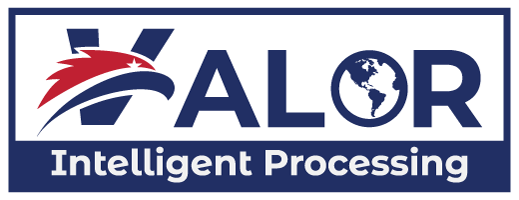Debt can be overwhelming, especially when payments fall behind. The stress of unpaid bills can create financial anxiety, making it difficult for consumers to regain control. Payment arrangements provide a structured way to make debt repayment more manageable by breaking down payments into smaller, more affordable amounts.
With a well-designed payment plan, consumers can pay off their debts over time in a way that aligns with their financial situation. These plans help ease the burden, reduce stress, and improve financial stability.
In this article, we’ll explore how payment arrangements work, the benefits they offer, strategies for structuring effective plans, and best practices for clear communication between collectors and consumers.
What Are Payment Arrangements?
Payment arrangements are agreements between a creditor or collection agency and a consumer that allow for gradual repayment of debt over time. Instead of requiring a lump sum, consumers can make scheduled payments that fit within their budget.
Key Features of Payment Arrangements:
✔ Flexible Terms: Plans can be customized based on the consumer’s financial situation.
✔ Predictable Payments: Consumers know exactly when and how much they need to pay.
✔ Long-Term Affordability: Payments are structured to prevent financial strain.
By providing a structured and manageable approach, payment arrangements benefit both consumers and creditors by increasing the likelihood of successful debt repayment. Learn more about how you can retain control of your debt by reading our article on Practical Tips for Handling Debt Stress and Regaining Control.
The Benefits of Payment Arrangements for Consumers
Implementing a payment arrangement offers significant advantages to consumers who are struggling to manage their debt.
1. Reduces Financial Stress
Breaking down a large debt into smaller, scheduled payments makes repayment less overwhelming. Consumers can focus on making steady progress without the pressure of paying everything at once.
2. Aligns with Personal Budgets
Flexible payment plans allow consumers to set up installments that fit within their income and expenses, making it easier to stay on track.
3. Helps Avoid Late Fees and Penalties
By adhering to a structured payment plan, consumers can avoid accumulating additional interest, late fees, or penalties that can increase the total debt amount.
4. Improves Credit Score Over Time
Consistently making on-time payments helps rebuild creditworthiness, allowing consumers to improve their financial standing for future lending opportunities.
Payment arrangements provide a clear path forward, helping consumers regain financial control and work toward a debt-free future.
How to Structure an Effective Payment Plan
Creating an effective payment plan requires careful assessment and collaboration between the collector and the consumer. The goal is to find a balance that ensures repayment while keeping payments affordable.
Steps to Create a Payment Arrangement:
1. Assess the Consumer’s Financial Situation
Before structuring a plan, discuss the consumer’s income, expenses, and other financial obligations. Understanding their ability to pay will help in designing a realistic repayment schedule.
2. Determine a Manageable Payment Amount
The payment should be substantial enough to clear the debt within a reasonable timeframe but not so high that it causes financial hardship for the consumer.
3. Set a Clear Payment Schedule
Decide on the frequency of payments—monthly, biweekly, or another agreed-upon schedule—and establish firm due dates to keep the plan on track.
4. Put the Agreement in Writing
A formal written agreement should outline all terms, including:
- Payment amounts
- Due dates
- Potential penalties for missed payments
- Contact information for any questions or concerns
Both parties should review and agree to the terms before proceeding.
5. Monitor Progress and Offer Flexibility When Needed
Regular check-ins ensure that consumers remain on track. If their financial situation changes, adjustments may be necessary to keep payments manageable.
A well-structured payment plan increases the likelihood of successful debt resolution while maintaining a positive relationship between collectors and consumers.
Best Practices for Communicating Payment Arrangements
Clear and empathetic communication is essential to ensure consumers understand and commit to their payment plans.
1. Use Simple and Clear Language
Avoid industry jargon and complex financial terms. Explain the payment arrangement in plain language so consumers fully understand their obligations.
2. Be Transparent About Terms
Clearly outline payment amounts, due dates, and any associated fees. Transparency helps build trust and reduces the risk of misunderstandings.
3. Show Empathy and Support
Debt repayment can be stressful, so approach conversations with understanding. Demonstrate that you’re there to help, not pressure, the consumer.
4. Provide Easy Access to Support
Give consumers multiple ways to contact your team for assistance. Whether through phone, email, or online chat, open communication channels encourage consumers to reach out with questions or concerns.
5. Confirm Understanding
Before finalizing the agreement, ask consumers to summarize the terms in their own words. This ensures they fully grasp the details and are comfortable moving forward.
Following these best practices helps create a positive experience, increasing the likelihood of successful repayment.
Conclusion: The Value of Payment Arrangements in Debt Collection
Payment arrangements are an effective way to help consumers manage their debt responsibly while providing creditors with a structured path to recovery. These plans reduce financial stress, make payments more manageable, and encourage on-time repayment.
By structuring fair and realistic payment plans and maintaining open communication, debt collectors can foster positive consumer relationships and improve overall recovery rates.
Looking for Expert Debt Collection Solutions?
At Valor Intelligent Processing, we specialize in ethical and consumer-friendly debt collection practices. Contact us today to learn how we can help you implement effective payment arrangements that benefit both your business and your customers.


